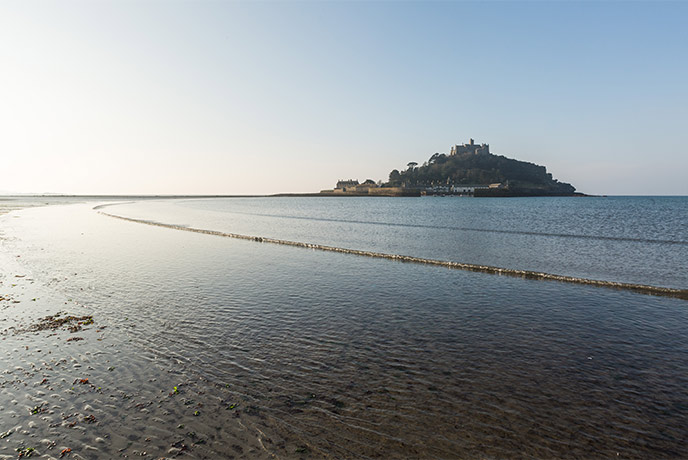Ever dream about walking in the footsteps of our ancient ancestors, actually stepping through the door of a prehistoric house – well, in Cornwall you can do just that! With this guide you can discover some of the best preserved ancient villages to be found anywhere in mainland Britain.
Beyond the ceremonial sites, the stone circles, and the marvellous monuments, there are some truly impressive prehistoric settlements in Cornwall that can transport us back to the everyday life of thousands of years ago. There are ancient villages that have survived from the Iron Age and huts circles from the Bronze Age to explore.
Acting as wonderful windows into the past, these prehistoric villages are something really rather special. Beyond their archaeological value, they also allow us to imagine with surprising clarity how our ancestors lived and where they ate, slept, and socialised. These are magical places where closely connected communities lived and worked thousands of years ago... and we can walk in their footsteps.
Ready to take a stroll through history? Explore Cornwall’s prehistoric villages and uncover a whole new side of Cornish heritage.
Chysauster
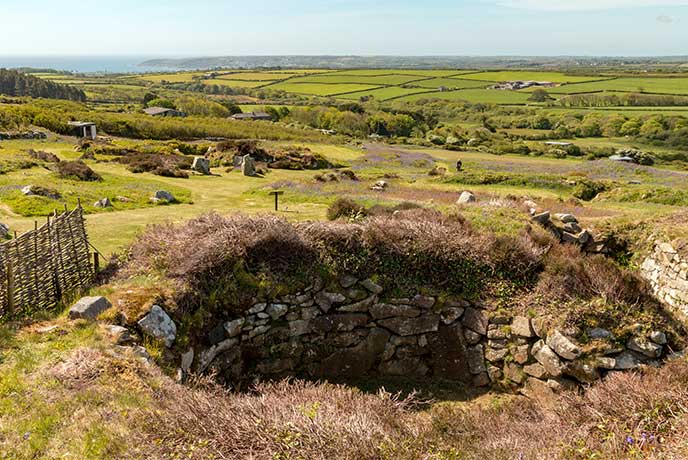
Chysauster is one of the most important ancient sites in Cornwall. A wonderfully preserved late Iron Age settlement in West Cornwall, not far from Penzance, it is cared for by English Heritage and is a must for anyone with an interest in the past and understanding how our ancestors once lived. This atmospheric and hugely evocative ancient village is one of the finest examples of its kind anywhere in Britain and has been compared to the internationally important site of Skara Brae on Orkney in Scotland.
Visitors can walk through a village that was occupied from about 400 BC to 400 AD, around 1,600 years ago. There are nine courtyard houses to explore, a complex, and a unique type of dwelling found only in the west of Cornwall and the Isles of Scilly, and these buildings are arranged in pairs facing each other across a ‘street’. Each of the houses has a central courtyard around which separate rooms are arranged, and each room is thought to have had a specific use, for example, for sleeping, storage, cooking and some for keeping animals.
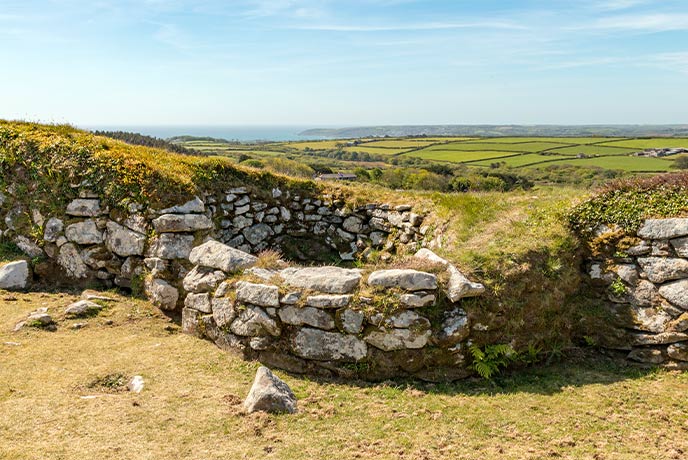
But what is most striking about Chysauster is the amazing preservation. The dry stone walls of these houses seem to remain almost completely intact, standing several feet high; all they are missing are the thatched roofs! You can spot the stone lined hearths and ovens where meals would have been cooked, quern stones where grain was ground to make flour for bread, and carved post holes where the timbers that supported the roof once stood. There was even a surprisingly sophisticated system for the drainage and storage of water. Chysauster is very much a place where the past comes into focus and it is brought vividly to life.
Besides the village itself, there is also a ruined fogou close by (find out about these strange structures in the Carn Euny section below) and a small museum in a wooden hut with displays about the finds from the site and information about the surrounding area which is littered with prehistoric sites such as Men an Tol and Lanyon Quoit. Chysauster is open between March and September, with admission free to English Heritage and Cornwall Heritage Trust members.
This enigmatic place has been a tourist attraction since the 19th century but it wasn’t until the 1930s that extensive excavations took place and the extent and importance of the site was revealed. These days Chysauster acts as a gateway into the wonderful world of prehistoric Penwith, people who visit here often find themselves seeking out more ancient sites!
Carn Euny
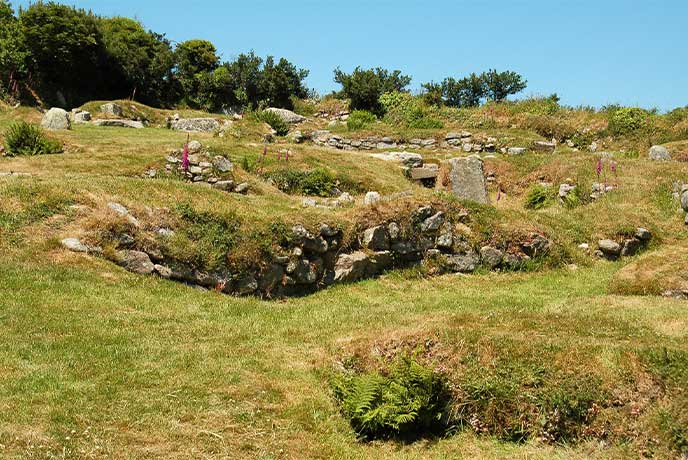
Though not as well-known as its neighbour, Chysauster, the late Iron Age village of Carn Euny is a wonderful site, with many people enjoying its more secluded location and its amazing fogou, which was first discovered by miners in the 1860s. Carn Euny is free to enter and open year-round, making it a great place to visit at any time of year.
The Carn Euny settlement stands on a south facing slope close to the hamlet of Brane in the centre of the Land’s End Peninsula. This village was occupied far longer than Chysauster, it is thought that for over 800 years generations of the same community lived and worked here, building, re-building, re-purposing and repairing the houses, which may account for the more higgledy-piggledy layout.
You can cross worn stone thresholds, pass through stone doorways, and walk around homes dating from about 500 BC, with three large courtyard houses, six other smaller buildings, and an excellent fogue - a true highlight of Carn Euny.

Fogous, from the Cornish word meaning ‘cave’, are unique to Cornwall and there are 15 known examples in the county that come in various shapes and sizes. Put simply, they are underground tunnels and structures that were constructed some two thousand years ago during the Iron Age. The fogou at Carn Euny is particularly well preserved and consists of a series of passages leading to a unique, round corbelled chamber deep beneath the earth. It was first excavated in the 1860s by local antiquarian William Borlase and underwent a restoration in the late 1960s.
Fogous are always found in association with settlements but the exact purpose of these subterranean features remains something of a mystery. Some believe that they were used as places of refuge in times of danger, to store meat or dairy products, or perhaps that they had some ritual use. The idea of a ceremonial function is supported by the various objects that have been discovered within them, including pottery, beads and burnt bones. These ‘offerings’ suggest that they were powerful places that held some significant meaning to the people living alongside them.
Whatever their purpose, a visit to the show-stopping example at Carn Euny is unmissable. Stepping inside the beautifully constructed domed interior of the inner chamber is awesome in every sense of the word. And keep your eyes peeled for the rare phosphorescent moss on the walls – it glows in the dark!
Goldherring

There are around 30 known Iron Age or Romano-British courtyard settlements in the far west of Cornwall and the Isles of Scilly and these are largely found on granite uplands in the parishes of Morvah or Zennor in the Far West. Many are lost amongst the undergrowth out on the moors for much of the year and are near impossible to find. Others, like Goldherring, are a little off the beaten track but well worth seeking out if you enjoyed your visit to Chysauster or Carn Euny and fancy a quieter alternative!
The Goldherring settlement sits on the slope of a hill not far from the Boscawen-Un stone circle and is set within a banked enclosure. This is a smaller site with just one large courtyard house and a number of smaller hut circles or buildings. There is evidence of ancient field systems visible here also.
The site was excavated by the Cornwall Archaeological Society in the late 1950s and a few Roman coins have been found here dating from 258-67 AD, as well as fragments of Roman pottery and shards of amphorae. There was also evidence that iron was being smelted at the settlement and other interesting finds included hearths, stone paving, rotary querns, whetstones, spindle whorls and parts of a granite bowl.
Since the excavation, local volunteers have tried to keep the settlement free from undergrowth, which is an ongoing battle!
Bodrifty
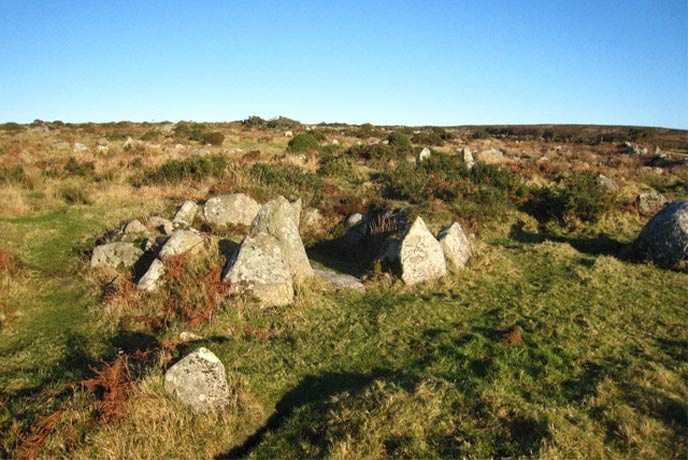
Bodrifty is an amazing privately owned, Iron Age settlement with a reconstructed round house nearby. A visit here is like taking a step back in time, providing an escape from the bustle of everyday life. The site, tucked away in deep countryside, was first excavated in the 1950s when a village of eight Iron Age homes was uncovered. However, Bodrifty is thought to date back even further as Bronze Age pottery was also discovered, suggesting that people had been living here for perhaps 6,000 years or longer.
In 1999, inspired by the settlement, local farmer Fred Mustill decided to build his own round house. After extensive research and a small grant for the project, Fred began constructing the replica. It was a real labour of love, employing traditional techniques and local materials, including several tons of granite, felled trees and reeds for the roof from nearby marshland.
The result, which was revealed in an episode of the TV series Time Team, is an astonishing building that would have been very familiar to our ancestors. Round houses once covered the whole of the UK and this house at Bodrifty is now used as an educational aid for local children and anyone interested in archaeology (you need to book in advance to visit the round house). You can also privately hire the round house as a venue for special ceremonies, weddings, and courses.
Leskernick Hill
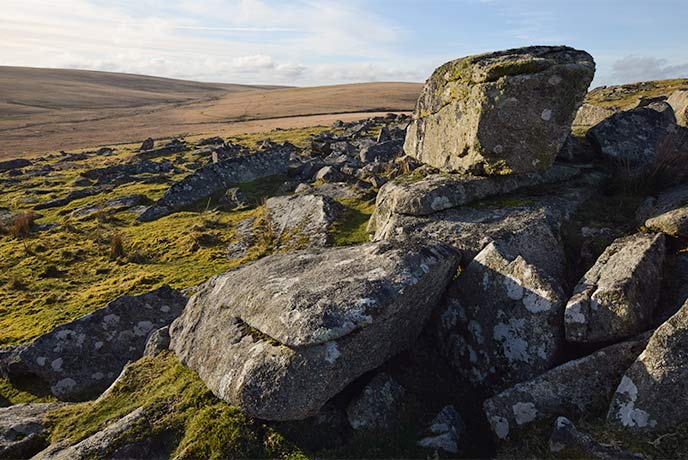
The wild upland of Bodmin Moor is a fabulous place for walking and for finding space and freedom whatever the season. It’s also an area of Cornwall that is covered with prehistoric archaeology - there are hut circles galore! But the remains of the majority of these houses date from the Bronze Age, making them several thousand years older than the settlements at Chysauster or Carn Euny.
Although you can literally stumble upon the low walls of these ancient houses all over the moor, there are certain places where they are easier to spot and one of those places is Leskernick. This isolated hill is part of an incredible prehistoric landscape that included two stone circles, a stone row, barrows, cairns, ancient field systems and numerous hut circles, all crowded into a relatively small area.
There are actually two Bronze Age settlements on Leskernick Hill, on its south and western slopes, and there is a theory that the community may have moved between the two sites depending on the weather or the season. The remains of at least 44 hut circles can be seen here, all built around 4,000 BC. There is also evidence that this area of the moor has been a focus for prehistoric people since the end of the last Ice Age, around 10,000 years ago!
Wandering around the hillside today, you can pick out the outline of field boundaries criss-crossing the slopes, as well as find yourself standing within the confines of a hut circle that back in the mists of time was someone’s home.
This is a perfect place to escape the crowds on the coast, you are more likely to have an encounter with a herd of sheep or wild ponies than see another human!
Leskernick is best accessed from Westmoorgate, just off the A30 turning for Altarnun. From the small car park, a track leads out across the moor from about 1 mile to Leskernick hill. It’s a good idea to bring an OS map to help you find the stone circles and settlements.
If these stories of the ancient past have inspired you to get out and about exploring the amazing history of this region, explore our beautiful holiday cottages in Cornwall to find a dreamy base, from the coastal wilds of the Far West to the rugged beauty of Bodmin Moor.


